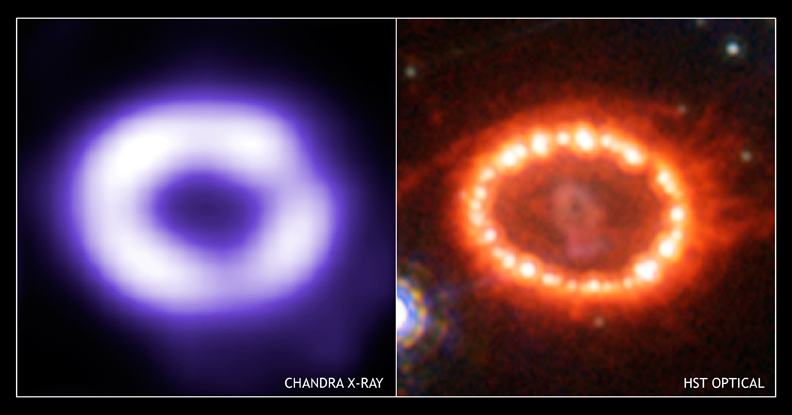Supernova 1987A: The remnant of an exploded star in the Large Magellanic Cloud galaxy 160,000 light years from Earth.
Caption: The Chandra X-ray image (left) reveals a ring of multimillion-degree gas produced by the collision of an outward-moving supernova shock wave with a ring of cool circumstellar gas. The optical image (right) from the Hubble Space Telescope shows a ring of bright spots that are also caused by the shock wave hitting the cool gas. Long before the explosion of the massive star that produced Supernova 1987A, most of its outer layers expanded away in a slowly moving stellar wind that formed a vast cloud of gas. Later, a high-speed wind from the star carved out a cavity about 1 light year in diameter in the cool gas cloud. As the supernova shock wave plows deeper into the cool cloud the ring should become larger and much brighter in both optical and X-ray light.
Scale: Each panel is 2.4 arcsec per side
Chandra X-ray Observatory ACIS Image
|


